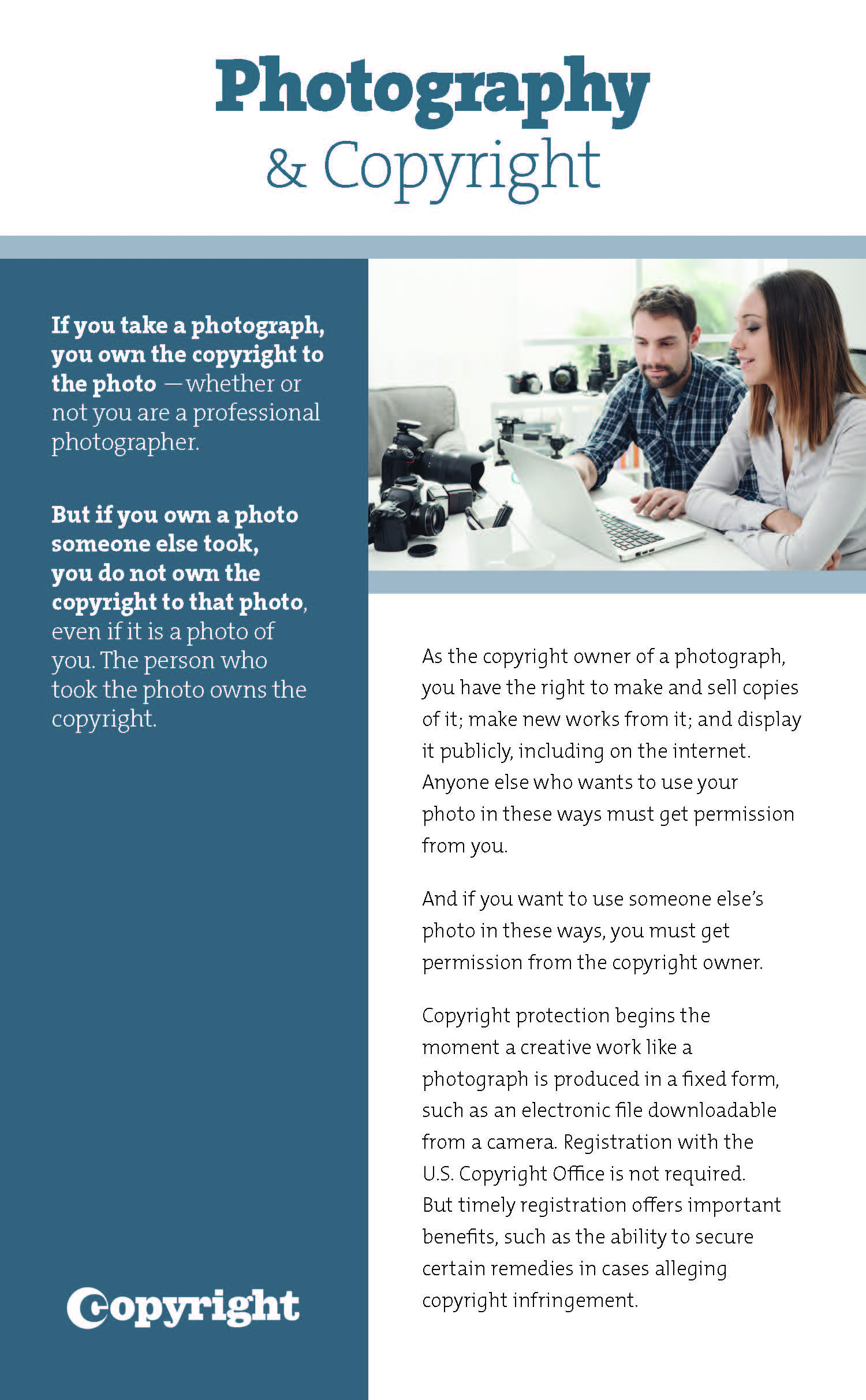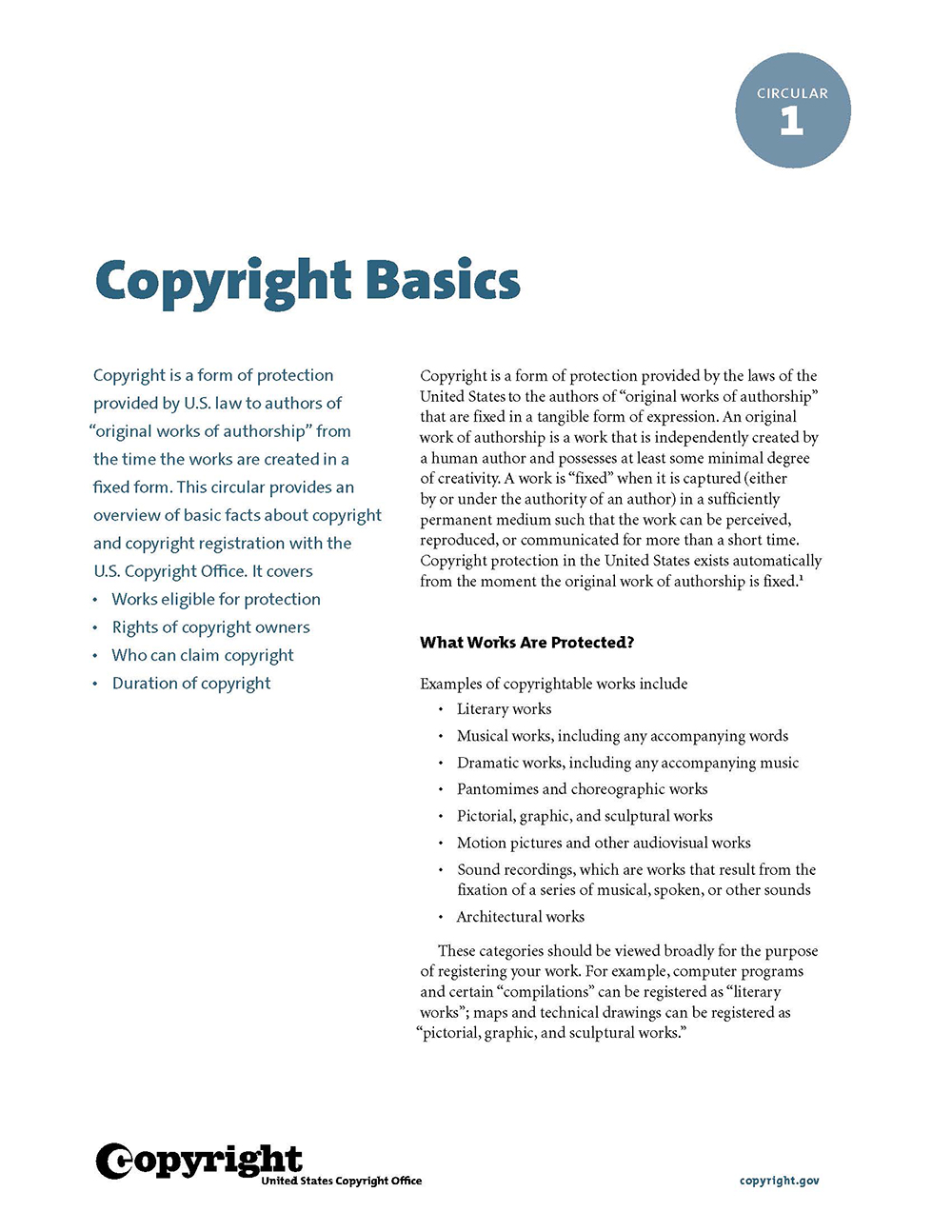What Visual and Graphic Artists Should Know about Copyright

If you’re a visual or graphic artist, there are a few key things to know about copyright law and the protections available to you.
First, copyright protects original works of authorship, including original pictorial, graphic, and sculptural artwork. A work is original if it is independently created and sufficiently creative. When it comes to copyright, creativity can be demonstrated in a variety of ways and reflects artistic choices like the subject matter, composition, depiction, and the use of the elements of design. Common symbols like smiley faces and hearts, as well as typography, are ineligible for copyright protection. Very simple works, like stylized word logos or minimalist art, also might not be protected by copyright, although other legal protections, like trademark protection, may be available.
Second, you should know that copyright protection exists from the moment an original work is “fixed” in a tangible medium. In the visual arts, for example, fixation occurs when you paint a picture or create digital art. Examples of visual artwork that can be protected by copyright include graphic art, paintings, sculptures, illustrations, architectural drawings, and more. Photography can also be protected by copyright. You don’t need to do anything else for your work to be protected by copyright, although you can register it with the U.S. Copyright Office for additional legal protections.
Third, you should know that as the copyright owner, you have the right to make, sell, or otherwise distribute copies; adapt the work; and publicly display your work, including on the internet. If you want to use someone else’s work in these ways, you must get permission from the owner.
Registering Your Work
Although your work is protected by copyright from the moment it is fixed, the U.S. Copyright Office recommends registering it with us to make a public record of your ownership, as well as for additional legal benefits like the ability to bring an infringement claim for U.S. works and to seek certain types of monetary remedies. Applying for registration with the U.S. Copyright Office requires an application, a filing fee, and a copy of the work (which the Office calls a “deposit”).
Depending on whether your work has been published, there are several different online application options. For copyright purposes, artwork is published when the original work, or a copy of it, is distributed to the public by selling, renting, leasing, lending, or otherwise transferring ownership of that copy of the work. Art is also published when either the original or copies of the work are offered for sale, rent, leasing, or lending or for the purposes of further distribution or public display. The public display of artwork, in and of itself, does not constitute publication.
For example, displaying a painting in a commercial gallery with the authorization of the copyright owner constitutes publication if it is being offered for sale. By contrast, a sculptor who places their kinetic art in their own front yard has not published their work because, in this instance, it is simply on public display.
- To register one work, published or unpublished, use the Standard Application.
- To register up to ten unpublished works by the same author, if the author is also the claimant, use the Group Registration of Unpublished Works application.
Other options for published works:
- Group Registration of Contributions to Periodicals can be used for illustrations or artwork first published as a contribution to a periodical, such as a newspaper, magazine, or journal.
- Multiple works can be registered on one application, under certain circumstances.
Additional options are available for photographers. You can reach out to our help team for assistance in determining the best option for you.
A Note on Works Made for Hire
Generally, the author and initial copyright owner of visual or graphic art is the person who makes the work. One limited exception to this rule is when the visual art is created as a “work made for hire.” A work made for hire occurs when the artist creates works within the scope of their employment (like, for example, a cartoonist at a newspaper). Artists and commissioning parties can also sign written agreements stating that the work is made for hire. For more information on the requirements, see Works Made for Hire(Circular 30). If the artwork was created as a work made for hire, the employer or commissioning party is considered the author and owns the copyright to the work rather than the artist.
If Your Work Is Used Unlawfully
It is your right to pursue legal action if your work is used unlawfully without your permission and not under a statutory exception or limitation like fair use. However, if your work is a U.S. work, you do need to register it with the Copyright Office before bringing an infringement lawsuit in federal court. Also, if you take someone to court for using your work without your permission and you want to try to have your attorneys’ fees covered or pursue certain other types of compensation (called statutory damages), the timing of your registration matters. See Circular 1 for more on that.
Generally, copyright lawsuits are decided in federal court. You may also choose the Copyright Claims Board (CCB), a voluntary forum within the Copyright Office to resolve copyright disputes involving damages totaling less than $30,000. It is intended to be a cost-effective and streamlined alternative to federal court. To use the CCB, you also must have filed an application to register your copyright. You can read more about the CCB here.

Copyright protection exists from the moment you make visual art.

Although your work is protected by copyright from the moment it is fixed, you can register your work with the U.S. Copyright Office for additional benefits, including access to federal courts in the case of infringement.

Did you know? Graphic novels and comic books can be registered as visual art or literary works!

If your work is used unlawfully, without your permission and not under a statutory limitation, it is your right to pursue legal action.
Additional Resources

Photography
Information for photography applications.

Registration At a Glance
The who, what, where, when, why, and how of copyright registration.

Circulars
Circulars provide up-to-date and authoritative information to a general audience.